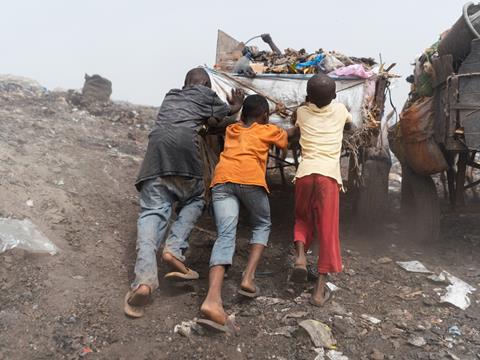
For all our talk about the “mountains of packaging waste” created in the European Union every year, we rarely see actual physical evidence of this on our continent.
In developed countries, most of us dispose of our rubbish in bins and never see a trace of it again – thanks to effective waste management systems that have been heavily invested in by municipal governments. Out of sight, out of mind - for many people.
Developing countries do not often have this luxury. In some of the largest cities in the global south, skylines are punctuated by literal “mountains of waste” – dumpsites where most of the rubbish in these places ends up.
These dumps aren’t merely evidence of underdeveloped, underfunded waste systems – they also present immense dangers to the people that work on them, who are commonly known as waste pickers.
Waste pickers trawl through the detritus in order to recover valuable materials that they can then sell on, or use themselves. As a result of the conditions they work in, many waste pickers face considerable risks to their health – as well as discrimination and abuse – on a daily basis.
Despite being heavily marginalised by the societies they live in, waste pickers perform an invaluable role in terms of collection and reuse in the absence of more formal waste processing infrastructure. By some estimates, roughly 60% of all recycled plastic on earth is initially collected by waste pickers.
And it’s not just plastic – Brazil recently achieved a 100% recycling rate for aluminium cans. The head of the Brazilian Association of Aluminum Can Manufacturers recently told us that waste pickers “are essential to the entire recycling cycle. We say that they are the specialists in this field, because they are the ones who collect and correctly store the aluminum cans before sending them to the factories. They are fundamental pieces in the whole process.”
The dire working and living conditions of many waste pickers were brought into sharp, tragic focus in August, when a massive rubbish dump in the Ugandan capital of Kampala collapsed, killing 26 people.
In the words of Ceris Turner-Bailes, Chief Executive of WasteAid: “The accident was caused when a section of the dumpsite collapsed onto houses that were perilously close to the edge of this vast area, killing those trapped underneath – many of whom likely relied on the site to eke out a living waste picking for items to sell.”
Turner-Bailes actually visited the Kiteezi dumpsite earlier this year, when WasteAid opened its inaugural programme in Uganda. “It was a visceral reminder of the scale of the challenge we face and also the risks faced by informal waste workers every day,” she told Packaging Europe.
“Poverty forces these people to comb through the mounds of rubbish and make their homes in flimsy structures within touching distance of the mountains of waste.”
In terms of solutions to this issue, Turner-Bailes says that there needs to be “more focus on and support for waste management systems in Africa.”
Circular economy-focussed approaches, an increase in knowledge transfer, and support to politicians and municipal authorities could help us to avoid tragedies like the Kiteezi dumpsite disaster repeating themselves.
If you liked this story, you might also enjoy:
The ultimate guide to the Packaging and Packaging Waste Regulation in 2024
How are the top brands progressing on packaging sustainability?
Sustainable Innovation Report 2024: Current trends and future priorities
Everything you need to know about global plastic sustainability regulation

















No comments yet